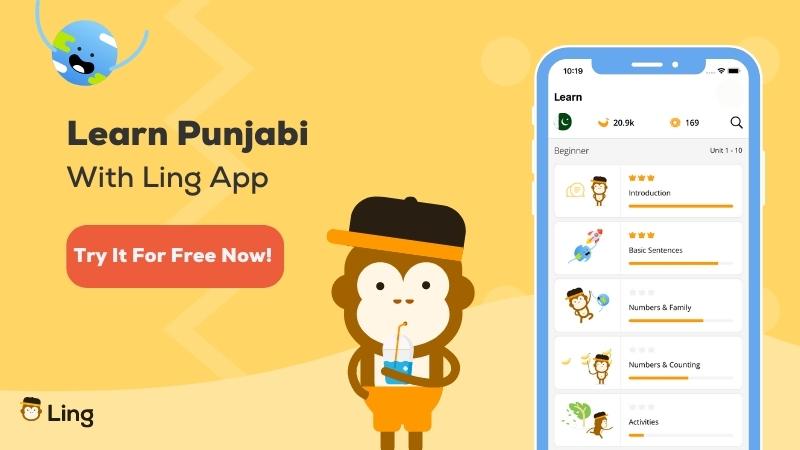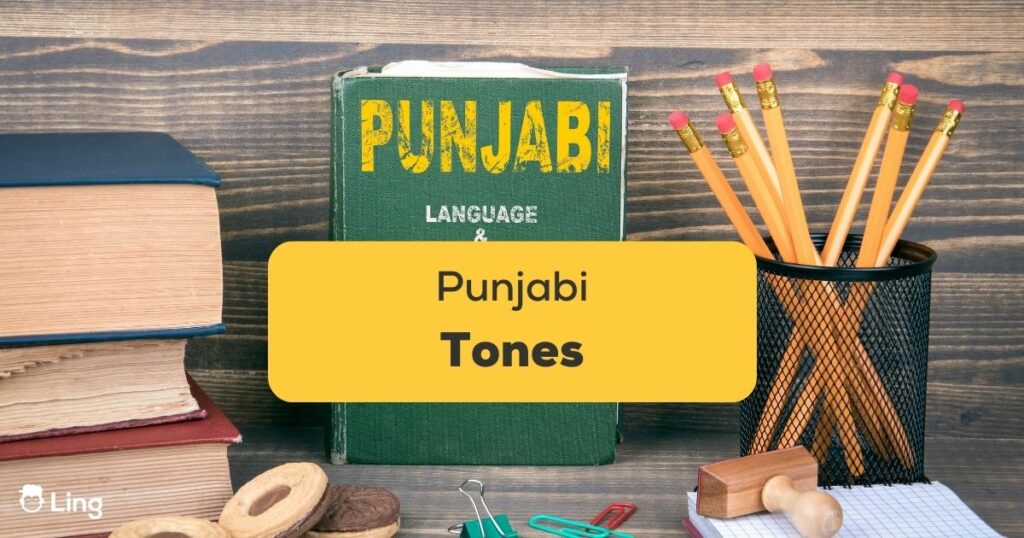Indulge me for a moment, dear reader, and allow me to whisk you away to a land of linguistic wonder. A land where the pitch and tone of a single syllable can be the difference between a declaration of love and a request for water. Welcome to the world of the king of tonal languages in the Indo-Aryan languages, the widely spoken language, Indian Punjabi. We’ll explore the Punjabi tones (ਪੰਜਾਬੀ ਸੁਰ/Pajābī sura) in this blog post today!
Tonal Languages
Tonal languages are a marvel of human communication, requiring a finely tuned ear and an appreciation for the subtleties of sound. In contrast to non-tonal languages like English, where the meaning of a word is largely determined by its individual letters and the order in which they appear, tonal languages use pitch and tone to convey meaning.
Take, for example, Punjabi, a tonal language spoken by over 100 million people worldwide. In Punjabi, each syllable can have a different tone, which can completely alter the meaning of a word. The high tone, marked by an acute accent, gives a word a sharp, high-pitched sound, while the low tone, marked by a grave accent, produces a deep, low-pitched sound. The mid-tone, marked by a dot, provides a neutral, flat sound that lies somewhere in between.
To illustrate this further, let’s explore some examples. The Punjabi word “likhṇā” means “to write,” but with a high tone on the last syllable, it becomes “likhārī,” which means “writer.” Similarly, “pānī” means “water,” but with a mid-tone on the first syllable, it transforms into “piār,” meaning “love.” And “nāl” means “with,” but with a low tone on the last syllable, it becomes “mālak,” meaning “owner.”
Three Tones
The three primary tones – high, mid, and low – are like the notes of a symphony that create a unique melody in each word. Each tone is significant and can alter the meaning of a word drastically, even if the vowels and consonants remain unchanged. Therefore, mastering the correct tonal pronunciation is essential to understanding and communicating effectively with Punjabi speakers.
The role of intonation in Punjabi is equally vital, as it adds emotion and depth to the language. The rising and falling of pitch in speech can convey a range of emotions, such as excitement, curiosity, surprise, and even irritation. For spoken Punjabi, for instance, a rising intonation at the end of a sentence can indicate a question, while a falling intonation can indicate a statement. The subtle variations in intonation help express the speaker’s attitude and intention, and understanding these variations can make conversations more natural and meaningful.
Now, let’s have some fun and explore some Punjabi phrases with different tones and meanings. The word “ਪਿਆਰ” (piār) is a perfect example of how tones can create entirely different meanings. With a high tone, it means to love, while with a mid-tone, it means ashes, and with a low tone, it means money. Similarly, the word “ਲਿਖਣਾ” (likhṇā) changes its meaning depending on the tone used. With a high or neutral tone, it means to write, while with a mid-tone, it means to read, and with a low tone, it means to mark. Another fascinating example is the word “ਨਾਲ” (nāl), which with a high tone, means with, while with a mid-tone, it means tapeworm, and with a low tone, it means flute.
Why Learn Punjabi As A Tonal Language?

Understanding the nuances of tone-only language is vital when communicating in Punjabi. It allows for greater precision in speech and reduces the risk of confusion between words that may look or sound similar but have different meanings.
Tonal languages like Punjabi are a testament to the complexity and beauty of human language. By learning to appreciate and master the various tones, we can unlock a whole new world of expression and connection.
Communication Benefits Of Learning Punjabi Tones
Unlocking the secrets of Punjabi tones can unlock a whole new world of effective communication with native speakers. By mastering the subtle differences in pitch and tone in all these languages, learners can ensure their intended meaning is conveyed accurately, preventing miscommunications and misunderstandings. Moreover, comprehension of Punjabi speech can be greatly enhanced by listening and identifying tones.
Enhancing Language Proficiency And Fluency
Mastering Punjabi tones can propel one’s language proficiency and fluency to new heights. Learning to use the correct tone in a word can broaden vocabulary and pronunciation accuracy, allowing learners to express themselves with greater clarity and confidence. Additionally, understanding tones can bolster other language skills, such as reading and writing.
Cultural Importance Of Punjabi Tones
Punjabi tones are not just a linguistic feature; they are an intrinsic part of Punjabi culture. By learning to appreciate and respect the nuances of tone, learners can gain a deeper insight into the rich and vibrant culture of the Punjabi-speaking people. It can foster greater cultural sensitivity and understanding of regional languages, creating stronger cross-cultural bonds and meaningful relationships.
Unleashing the power of Punjabi tones can be a transformative experience for learners. It can enhance communication skills, boost language proficiency and fluency, and create a deeper appreciation for Punjabi culture. So, embrace the power of Punjabi tones and open the door to a whole new world of language and Punjabi culture!
Learning The Punjabi Language

If you want to speak Punjabi, then you need to start learning with Ling. It provides a glimpse of both western Punjabi and eastern Punjabi. It not only helps you with the spoken form, but you’ll be able to write Punjabi much more effectively.
So download the app now from the Google Play Store or App Store and start learning Punjabi right away.





















